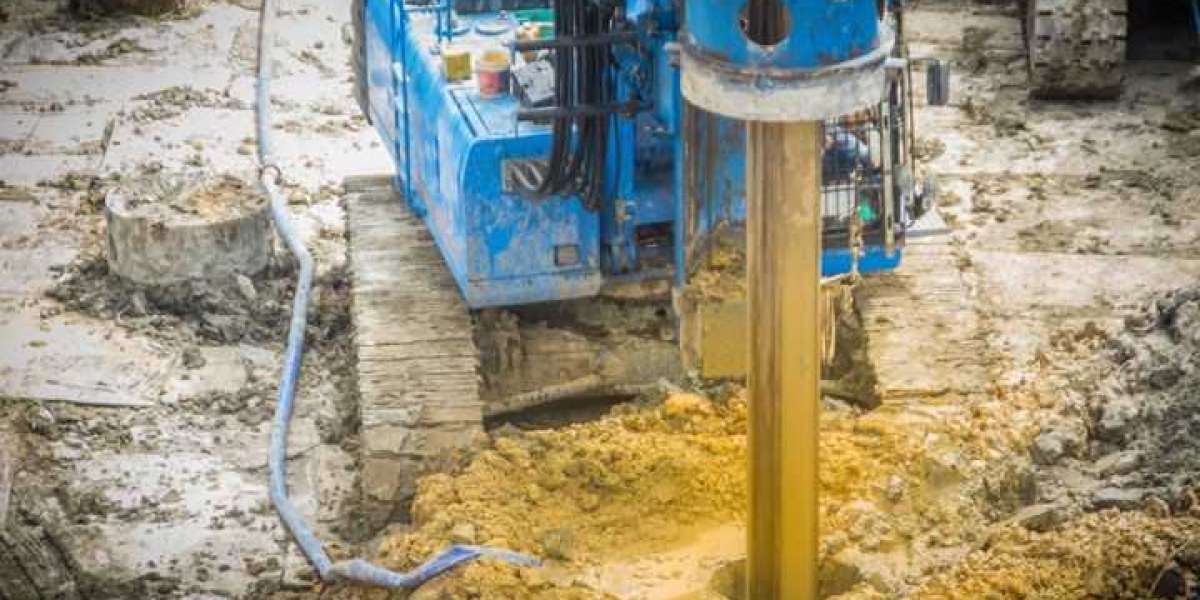Piling is a fundamental technique in construction that provides stable foundations for buildings and structures. Whether it's a residential, commercial, or industrial project, choosing between mini piling and full-sized piling is crucial. Additionally, maintaining and inspecting piled foundations ensures long-term stability and performance. This guide explores the differences between mini piling and full-sized Piling services in Kent, along with the essential maintenance and inspection practices used by contractors.
Mini Piling vs. Full-Sized Piling
Mini Piling
Mini piling is a cost-effective and versatile foundation solution, ideal for projects with restricted access or weak soil conditions. It involves installing small-diameter piles, typically ranging from 100mm to 300mm, using techniques such as:
- Driven Mini Piles– Displacement piles driven into the ground without excavation.
- Bored Mini Piles– Drilled and then filled with concrete or grout for reinforcement.
- Screw Piles– Helical piles screwed into the ground, providing excellent load-bearing capacity.
Advantages of Mini Piling:
Space Efficiency
Suitable for constrained sites like basements and extensions.
Reduced Noise Vibration
Minimal disturbance to surrounding structures.
Adaptability
Works well in soft or unstable soil conditions.
Cost-Effective
Uses smaller equipment, reducing overall expenses.
Full-Sized Piling
Full-sized piling, also known as deep foundation piling, is used for large-scale projects where heavy loads need to be supported. This method involves installing large-diameter piles, typically ranging from 300mm to over 1000mm, and includes:
Driven Piles
Hammered into the ground for solid foundation support.
Bored Piles
Drilled and reinforced with concrete and steel.
Continuous Flight Auger (CFA) Piles
Installed without casing, reducing soil displacement.
Advantages of Full-Sized Piling:
Higher Load Capacity
Ideal for high-rise buildings and bridges.
Deeper Foundation
Ensures stability in weak soil conditions.
Long-Term Durability
Resistant to settlement and ground movement.
Customizable Designs
Suitable for various construction needs.
How Contractors Maintain Piled Foundations
Proper maintenance is essential for prolonging the lifespan of piled foundations and preventing structural failures. Contractors follow these best practices:
Regular Structural Assessments
- Engineers conduct periodic inspections to assess the integrity of piles.
- Ground conditions are monitored to detect changes in soil composition.
Load Testing and Stress Analysis
- Piles are tested for their load-bearing capacity using static and dynamic load tests.
- Stress analysis ensures the foundation can withstand weight and pressure changes.
Addressing Corrosion and Wear
- Protective coatings are applied to steel-reinforced piles to prevent rust.
- Concrete piles are sealed to reduce moisture penetration and cracking.
Monitoring Settlement and Movement
- Contractors use precision instruments to measure settlement and ensure alignment.
- Any excessive movement is corrected through reinforcement techniques.
Inspection Practices for Piled Foundations
Regular inspections help identify potential issues early, preventing costly repairs and structural failures. Common inspection methods include:
Visual Inspection
Identifies cracks, signs of erosion, and exposed reinforcement. Ensures that piles remain structurally sound.
Non-Destructive Testing (NDT)
Ultrasonic Testing
Detects internal defects and voids in concrete piles.
Pile Integrity Testing (PIT)
Evaluates the condition of installed piles using low-strain impact testing.
Ground-Penetrating Radar (GPR)
Maps subsurface conditions to detect anomalies.
Dynamic and Static Load Testing
Dynamic Load Testing
Uses impact force to assess pile performance.
Static Load Testing
Measures settlement under controlled loads to verify design assumptions.
CCTV Inspection for Bored Piles
Mini cameras are used to inspect deep bored piles for defects. Helps identify blockages or discontinuities within the pile structure.
Conclusion:
Choosing between mini piling and full-sized piling depends on project requirements, soil conditions, and budget constraints. While mini piling is ideal for restricted spaces and cost-effective solutions, full-sized piling provides greater load capacity for large structures. Regardless of the method used, regular maintenance and thorough inspections are critical to ensuring the longevity and safety of piled foundations. By implementing best practices, Piling Contractors in Essex can enhance the durability and stability of structures built on piled foundations.
Alpha Piling LTD is a leading specialist in foundation solutions, offering expert piling services for residential, commercial, and industrial projects. With years of industry experience, the company provides mini piling, bored piling, CFA piling, and driven piling to ensure strong and stable foundations. Alpha Piling LTD is known for its commitment to quality, safety, and efficiency, using advanced techniques and equipment to deliver reliable results. Whether working on restricted-access sites or large-scale developments, their team ensures cost-effective and tailored solutions. With a customer-focused approach, Alpha Piling LTD guarantees durability and structural integrity for every project.







